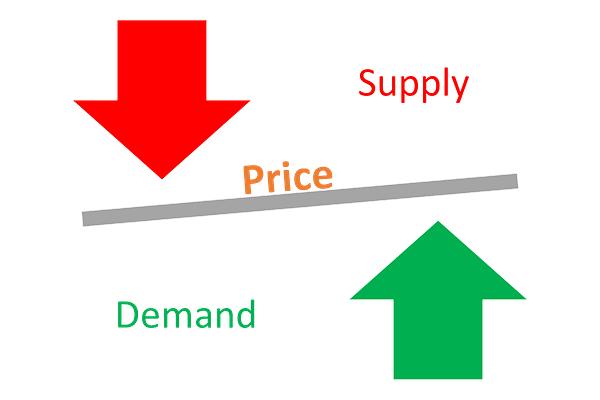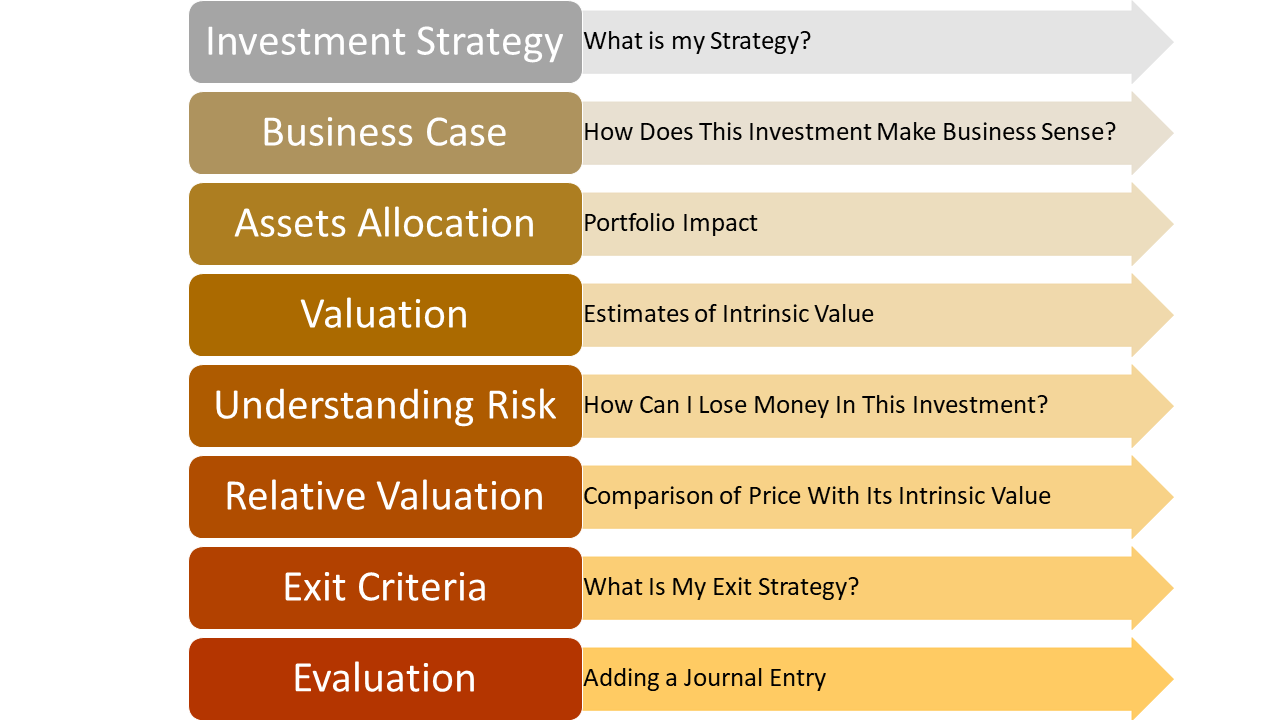How to Research New Crypto Projects
How do you separate great projects from mediocre ones? Crypto is a probability game. You can increase or lower your chances depending on what projects you choose. Understanding how to do research is one of the most important skills in crypto.
Most people do it in an unstructured way, so their choices are influenced by their emotional stance, other investors, and media news. This is the reason why we should have a process to evaluate projects in the same way. This will allow us to compare different projects and build our winning portfolio.
Investment strategy
An investment strategy should answer four questions:
Selection -> How to evaluate it.
Back-tests -> How to check it.
Two of them I’ve already covered in previous articles. I encourage you also to check them. Here is a summary of these frameworks.
Investment Process Framework
What is my strategy (Investment Strategy)
The investment strategy must be consistent with our personal skills, interests, values, and abilities.
The investment strategy must be consistent with your portfolio objectives.
You must follow the investment strategy long enough to benefit from the competitive advantage without being distracted by other investment alternatives.
How does this investment make business sense (Business Case)
My portfolio Impact (Assets Allocation)
My estimates of Intrinsic Value (Valuation)
Estimate returns - What are the assumptions and drivers behind the expected return? What is the probability?
Source of investment return (positive expectation, competitive advantage, explicable market edge)
How can I lose money in this investment (Understanding the risks)?
Risk identification & mitigation
Remaining uncontrolled risks that do not overlap with other investments
Comparison of Price with its Intrinsic Value (Relative Valuation)
What are my Exit Strategies (Exit Criteria)?
Adding a Journal Entry (Evaluation)
Screening Framework
Screener and screening strategy -> where and how do I want to find new investments?
Screening criteria -> what is the most important for me?
SWOT analysis -> what do I know about this?
Investment thesis -> why do I want to buy this?
Selection
After we have created our investment and screening strategy, we have to choose tokens. Depending on our screening criteria, we probably now have more projects than we want to invest in. A high number of coins is not manageable, so adjust it to your time constraints. Similarly, a low number also increases your risk due to low diversification.
Tokenomics
Many people talk about tokenomics, but few people understand it. Focusing only on demand or supply won’t help you. To evaluate project tokenomics, you must consider two parts of this equation and understand its dynamics.
The popularity of this topic is evidenced by the fact that my most popular tweet was about a “Fully Diluted Valuation”:


Let us start from the basics. Price is the result of supply and demand:
Demand & Supply => Price
It is set by these forces and reflects everything investors collectively believe, hope for, and fear.
Value is not equal to the price. It is driven by fundamentals (cash flows, growth, and risks). These fundamentals are captured on the demand and supply side.
Supply
A supply tells us how many coins or tokens we have.
Supply = Inflation/vesting - buybacks - staking (locking)
For most projects, we have three different supplies, which we can find on sites like CoinGecko:
Circulating supply - (The number of coins circulating in the market and tradeable by the public). It is comparable to looking at shares readily available in the market (not held & locked by insiders and governments).
Total supply - (The number of coins that have already been created, minus any coins that have been burned/removed from circulation). It is comparable to outstanding shares in the stock market.
Max supply - (The maximum number of coins coded to exist in the cryptocurrency’s lifetime). It is comparable to the stock market's maximum number of issuable shares.
Circulating supply can be changed by the following.
Inflation and vesting – new tokens are created and are tradable after the vesting period. This is mainly used to compensate for different protocol personas like investors, project teams, or users.
Buybacks – tokens can also be destroyed (similar to stock buybacks). This reduces outstanding project tokens or requires the team to first buy tokens from the market.
Staking or locking – some tokens can be withdrawn from the public market to be locked in the protocol.
The dynamic behind this equation is complex, and for many projects, we have to analyze all factors. The most important metric to analyze is selling pressure. It tells us how the circulating supply will change after x months, where x is our investment horizon. If we will have a higher circulating supply in the future, the demand side will have to compensate, maintain and especially increase its price.
Demand⬇️ OR Supply⬆️ => Price⬇️
Demand⬆️ OR Supply⬇️ => Price⬆️
These three tools below can help you calculate the circulating supply.
https://www.unlockscalendar.com/
https://vestlab.io/
https://etherscan.io/
Demand
The demand side is much harder to evaluate, so that we will spend more time here. Circulating supply, however, doesn’t give you any signal without analyzing the right side of the equation. Demand can be divided into three forces:
Demand = Real Utility (Value) + Financial Utility (Earning on token/coin in Defi) + Valuation Changes (Speculation)
Valuation Changes
We start with the last part of the demand, which is Valuation Changes caused by:
Momentum (price action) – Most people (and some bots) buy if the price rises.
Investor mood – What is trendy now? Where is money flowing?
Other pricing factors – Accessibility for US citizens, CEX and DEX availability, etc.
This is the most important factor in the short and very often mid-terms in crypto. As this market will be more mature, its impact will diminish. Master it if you are a trader.
Financial Utility
Another factor is Financial Utility. This part can be harder to understand for crypto newcomers.
When you have stocks, you can’t do much with them. You can just wait for price appreciation and dividends. In crypto, we have tokens, which can be used as commodities or money in DeFi. Instead of just holding it, you can lend it to someone or provide liquidity in AMM DEX.
Financial Utility is the ability to earn on our tokens in DeFi. There are three key parameters to consider:
Cash flow (APY) – How much will we earn in one year if nothing changes?
Growth of APY – How likely are these changes going to happen?
Risk – How can you lose money here?
Real Utility
The real utility answers the question, “What value is provided by this protocol”? For many projects, there is no value, so you will have to filter them during Crypto Screening. Anyway, you can have a different investment strategy in which value doesn’t matter but only short-horizon price appreciation.
To provide real utility, a project needs to have credible resources to deliver it. In most cases, we need the following:
Teams and advisors
Partnerships
Investors, capital, and compliant product with regulators
Specific requirements for them depend on our project’s operating model:
Do we have enough resources (team, money, knowledge) to deliver this project?
Do we have the required support from other companies and organizations?
Do we believe that this is possible?
Next, we need to understand what problem we want to solve. How exactly do we want to create value for our users? We need two things here:
The market for which we can provide a solution to our problem (someone will have to buy our products or services).
Competitors who cannot provide what we want to offer – we need to be better in some way.
After we determine that there is a problem to solve and we can do this better than our competitors, we can evaluate the solution.
Product/Service – how do we want to deliver value?
Roadmap & Progress – when will this promise be fulfilled?
Adoption & Community – who will benefit from this?
As you see, the selection is the most time-consuming process of crypto investing. This is why many people follow a simple strategy like Buy and Hold using BTC to reduce the required time.
The next articles will go deeper into Cryptocurrency Investment Framework to give you more tools to evaluate even the most complex topics.
Selection Framework
Supply
Δ supply = inflation/vesting - buybucks - locking (staking)
Distribution
Demand
Valuation
Momentum (price action)
Investor mood, narrative
Other pricing factors (accessibility etc.)
Financial utility (earning on token/coin in DeFi)
Cash flow (APY)
Growth
Risk (growth and cash flow sustainability)
Real Utility
Resources & Credibility (Strengths/Weaknesses)
Teams & Advisors (internal)
Partnerships (external)
Investors, Capital & Compliance (credibility)
Idea & problem to solve
Market
Competitors
Solution (What, how, when, and to whom to deliver value?)
Product/Service (what, how?)
Roadmap & Progress (when?)
Adoption & Community (whom?)
What Next?
In future posts, I will discuss the new process from Cryptocurrency Investment Framework.
Stay tuned and follow me on Twitter to get a sneak peek of what is coming!





